Cablegram delivery form: ITI-DC-1.
- Home, index, site details
- Australia 1901-1988
- New South Wales
- Queensland
- South Australia
- Tasmania
- Victoria
- Western Australia
- International
- Special aspects
| Heading and notes: | Form number E.T. No. 7. Standard interim period heading above CABLEGRAM. |
| Message area: | 10 ruled lines. |
| Reverse side: | Blank. |
| Colours (text & form): | Blue on light cream. |
| Size of form overall: | 218 × 212 mm. |
| Size of datestamp box: | 22 × 32 mm. |
- has a single vertical line of text at the left;
- has a schedule number in the lower left of the heading area;
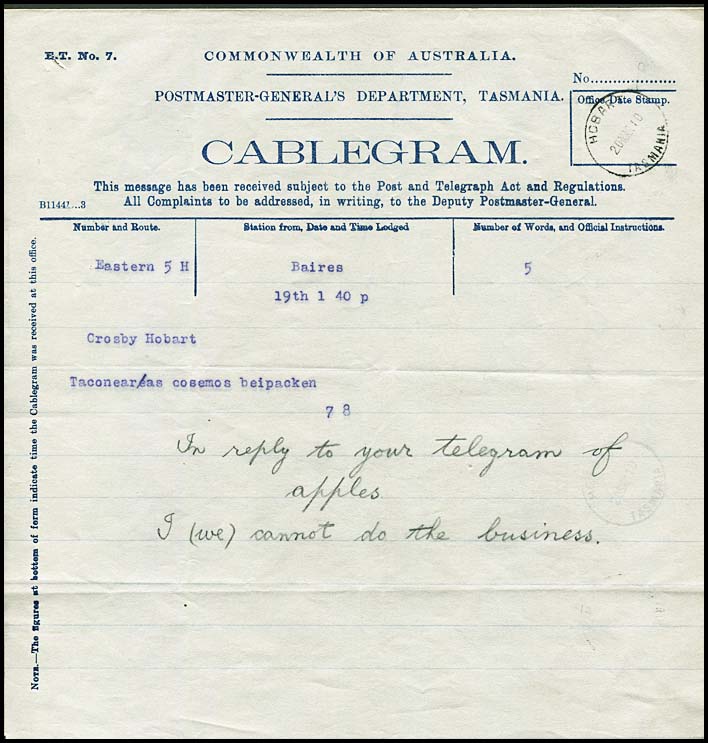 Provenance: Clemente, Johnstone. |
ITI-DC-1.
Baires to Hobart, Tasmania Cable sent "Via Eastern". Message is in code which has been translated in pencil below.
Note the faint outline of the date stamp near the pencil annotation - then see below. |
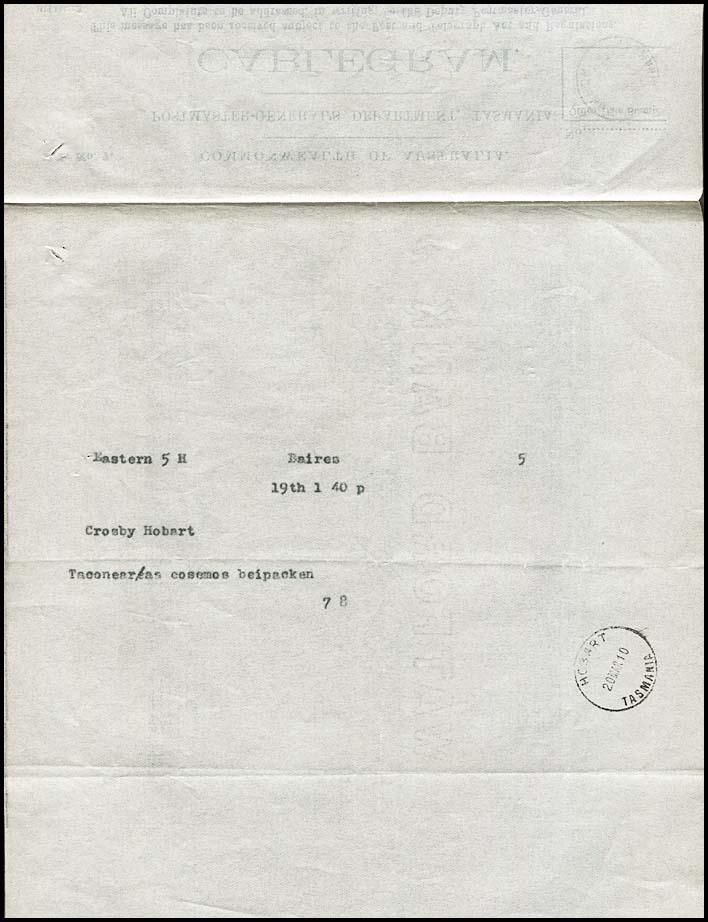 |
ITI-DC-1.
Second page of the above Cablegram. Although unrecorded in other references about Australian Telegrams, this form (and the following one) reveals that the Cablegram forms were printed as double pages of identical size. The second page was folded under so that the Operator could insert carbon paper between and hence obtain an identical copy of the message and its details. The top of the image on the left shows the CABLEGRAM heading etc shown above folded back. The lower section shows the copy of the message. Normally this part would have been torn off - hence leading to the rough top found on the few surviving Cablegrams. An extraordinary complete survivor. One of two examples of a complete form known. The other is shown below. |
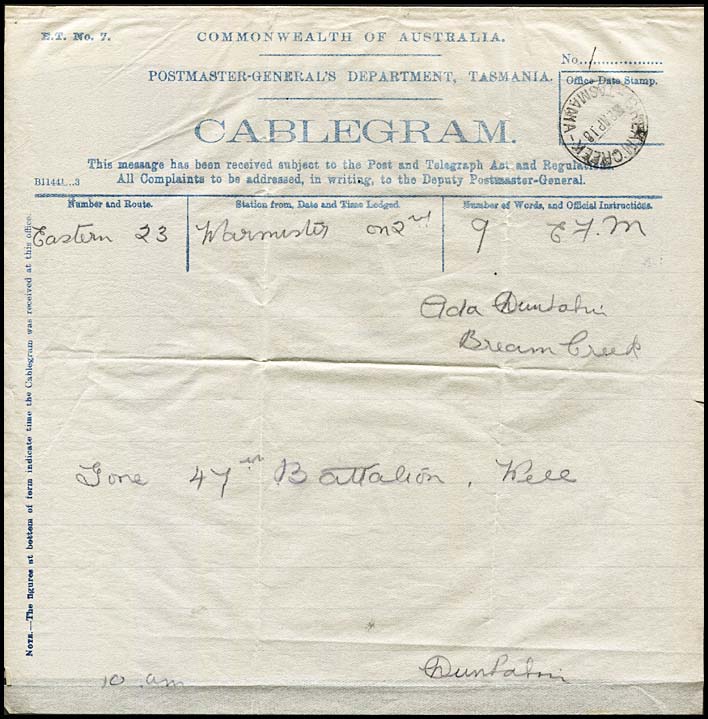 Provenance: Clemente, Johnstone. |
ITI-DC-1.
War (Ministry) to BreamCreek. Cable sent "Via Eastern".
Sent by Murdoch Dunbabin to his wife Ada. He was born on 13 November 1897 and had enlisted at Copping with his older (by 3 years) brother William. Both survived the War. The brothers were two of five Tasmanian Dunbabins in World War 2.
|
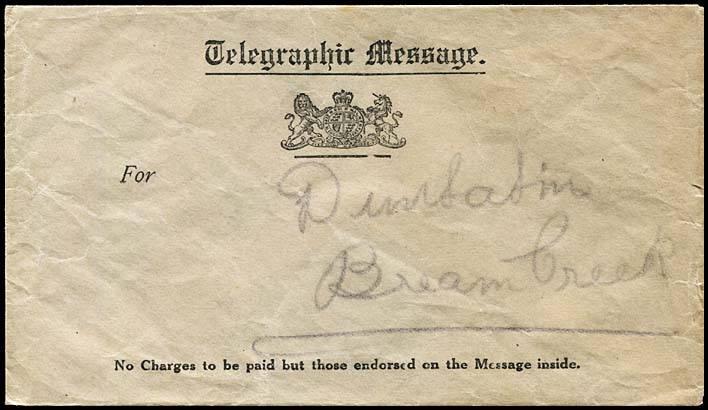 |
The delivery envelope (TC-EO-4C) used for the above Cablegram on 2 April 1918. |
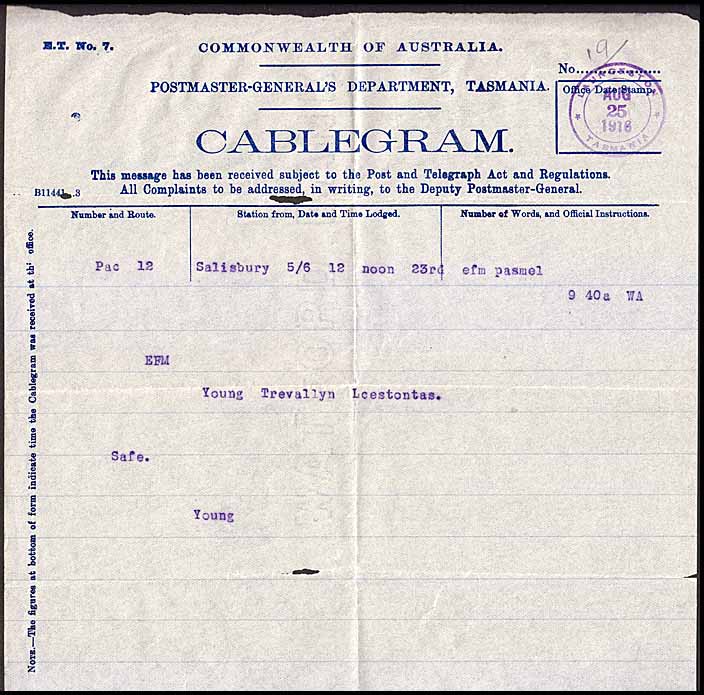 |
ITI-DC-1.
Salisbury to Launceston, Tasmania Note the rough edge along the top where the second page has been roughly torn off. Has a scarce rubber double circle date stamp (RC3).
|
Details of use and rarity.
| Form sub-number |
Schedule number | Earliest recorded date | Rarity rating |
| DC-1 | B11441 ... 3 | 20 March 1910. | RRRR |